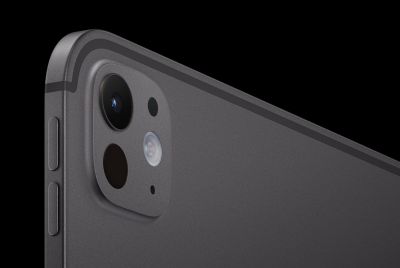With AirTag 2, Apple Might Finally Fix That Annoying Range Limit
Rumours suggest the AirTag 2 will feature a next-generation chip capable of tripling the current tracking distance
The original Apple AirTag is a brilliant piece of technology, but its limited connection range has long been a source of frustration for users. Now, rumour suggests a second-generation device is on its way, and it might finally address the biggest complaint.
Could the AirTag 2 be the solution to locating your lost items with seamless, extended reach?
After being available for four years, Apple is finally releasing a follow-up to the AirTag that directly addresses key user concerns. The upcoming tracking device is expected to launch this month, as reported by 9to5Mac, and represents the most substantial change to Apple's item location system since its introduction.
It's not a radical shift; it is a deliberate refinement designed to improve areas of everyday use that cause inconvenience.
How Apple's New Hardware Extends Your Reach
The AirTag 2 won't fundamentally change how the tracker operates, but it will improve its performance where it matters most. The primary improvement is a next-generation Ultra Wideband chip that significantly enhances the tracker's range, potentially tripling the Precision Finding distance.
This means a range that is currently around 10 to 30 metres could increase to roughly 30 to 90 metres. This chip technology first featured in the iPhone 15 series and could extend tracking abilities up to 200 feet, completely altering how you search for misplaced possessions across larger areas.
Consider practical scenarios — keys left on the far side of a huge car park; a rucksack located somewhere within a cavernous airport building; equipment stored in a massive storage facility.
This brings helicopter parenting to a whole new level.
— Martyupnorth®- Unacceptable Fact Checker (@Martyupnorth_2) August 9, 2025
Imagine tracking you kids with a Apple AirTag all day long. If you're doing this...seek help.
I love how Sketchers is promoting this as a way to find shoes. I had 4 kids, and none of them ever came home barefoot because… pic.twitter.com/QIY5NrwRFX
A more robust UWB signal means the iPhone's Precision Finding will become quicker and more accurate, guiding you with a reliable arrow rather than just a fuzzy Bluetooth zone. The result is a search that is faster, more precise, and involves less unproductive pacing.
Apple is simultaneously tackling persistent worries regarding user privacy. The built-in speaker is being re-engineered to make it significantly more difficult to disconnect or alter, directly addressing the safety concerns that have troubled AirTags from the beginning.
Additionally, this speaker is louder than the existing model, which will be useful if a misplaced item is tucked beneath a sofa or concealed deep inside a carry bag.
Sticking With the Tried-and-Tested Look
The Tim Cook-led tech giant is maintaining a familiar appearance. Mark Gurman mentioned that the item will closely resemble the existing version — the same well-known, disc-shaped tag. This decision offers advantages. Accessories you currently use, such as key ring holders, will likely still work, meaning your preferred case won't need to be replaced.
The dimensions strike a successful compromise: they are small enough for purses and backpacks, yet large enough to ensure the internal components remain dependable and easy to locate. Powering the device also remains straightforward.
The tracker features a replaceable CR2032 battery system, offering approximately a year of operation. Improved internal parts could potentially extend this lifespan slightly.
While some consumers hoped for a rechargeable option, Apple is not anticipated to adopt that change. The focus is on the worldwide availability of CR2032 batteries — meaning no wires, no charging cradle, and no complications.
Looking Ahead: AirTag and the Vision Pro Connection
The AirTag 2 is launching at a time when Apple is heavily invested in advancing spatial computing. It will integrate seamlessly into the current Find My network and could provide superior compatibility with the Apple Vision Pro device.
Picture wearing the Vision Pro and seeing markers fixed to the precise 3D location of your tagged belongings — not just a marker on a diagram, but an anchor point on your coffee table, your luggage, or your bicycle in the shed.
Reports indicate that manufacturing trials with Apple's Asian suppliers are now underway, indicating that mass production is progressing as scheduled. This timeline corresponds well with general updates across the Apple ecosystem. The price is not expected to change significantly from the current $29 (£21.55) for a single unit or $99 (£73.57) for a four-pack, although the added improvements may slightly increase the cost.
The Final Verdict: Smart Updates, Not a Total Overhaul
The AirTag 2 appears to be a sophisticated update rather than a dramatic reinvention. The increase in connection range resolves the most frequent complaint regarding the initial model.
Furthermore, the sturdier, louder speaker tackles genuine safety worries that became apparent during four years of public use. These improvements are especially beneficial for first-time buyers, as they can bypass the early restrictions and start immediately with the superior version.
If you are already an AirTag owner, your decision is straightforward. Do you frequently search for items across vast distances, and has the current range felt insufficient? If your answer is yes, the value of upgrading is obvious. If not, your existing trackers still function entirely well within their current capabilities, meaning you can postpone purchasing the new version.
For individuals new to tracking possessions or those managing items across extensive locations, the AirTag 2 appears to be the ideal choice. Apple's enormous Find My network, combined with superior hardware and deeper integration within the ecosystem, creates a product that competitors struggle to equal, even if the cost is higher than that of simple Bluetooth tags.
© Copyright IBTimes 2025. All rights reserved.




















